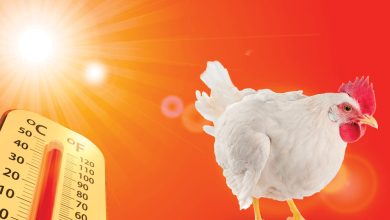KADAKNATH POULTRY IS GOD GIFTED
Anupam Soni1, Sharad Mishra2, Rupal Pathak3, Ashutosh Dubey4, Ayush Yadav4 and Upasana Verma
1. M.V.Sc Scholar, Livestock Production and Management Department, CGKV Anjora, Durg (C.G.)
2. Professor and Head, Livestock Production and Management Department, CGKV Anjora, Durg (C.G.)
3. Assistant Professor, Livestock Production and Management Department, CGKV Anjora, Durg (C.G.)
4.Ph.D. Scholar, Livestock Production and Management Department, CGKV Anjora, Durg (C.G.)
INTRODUCTION
Poultry keeping has a symbolic importance within the context of many economical, social, mystical and cultural activities throughout the world. The Kadaknath is also known as “Kalamanshi” meaning the fowl having black flesh. The Peculiarity of Kadaknath breed is that most of the internal organs show intense black coloration which is due to the deposition of melanin pigment in the connective tissues of organs and in the dermis. Such condition called as “Fibromelanosis”. Native place of Kadaknath in area of Jhauba and Dhar districts of M.P. they reared mainly by the tribal communities of Bhil and Bhilala The eggs are light brown in colour. The varieties of Kadaknath are jet-black, penciled and golden are more common. The bird is very popular among the adivasis mainly due to its adaptability to the local environment, disease resistance, meat quality, texture and flavor. The day-old chicks are identified by characteristic colour pattern i.e. brownish to black with irregular dark stripes over the back. The adult Kadaknath plumage varies from silver or gold spangled to bluish black without any spanging. The beak, skin, toes, shanks and soles of feet are slate-like. The comb, wattles and tongue are purple colour. The meat is repulsive to look at but delicious. The weight of cock is about 1.7 kg and that of hen is 1.3 kg. The hens are medium layer.
HABITAT
They are being mostly reared by the tribal / adivasis living in Jhabua and Dhar districts of M.P. and in Dungarpur and Udaipur districts of Rajasthan. The excellent features of Kadaknath is perching habits. It perches on bushes, lentils, tree tops and branches. It helps plenty of space saving and space utility. Kadaknath is also act a weed control.
CHARACTERISTICS
Average adult weight 1700 gm. males and 1300gm. females. The flesh of kadaknath though black as well as repulsive to look at is considered a delicacy. The meat and eggs are also be a rich source of protein (25.47 per cent in flesh) and iron, the blood and meat are considered to have medicinal property and is being used in the treatment of certain chronic diseases in human beings by the tribal. The meat of Kadaknath has been reported to have aphrodisiac importance. The meat of this bird has level of anti oxidants and two times more carnosine as compared to normal chicken.
DISEASE RESISTANCE
The Kadaknath appreciable resistance to diseases than any other exotic breeds of fowl in its natural habitat in free range. Lymphomatosis is still unreported in this breed.
MEDICINAL IMPORTANCE AND FOOD VALUE
The bird had medicinal properties as claimed by the tribal. These birds in addition to its claim as aphrodisiac possess a distinctive taste and have special medicinal value in haemopoietic and nervous disorders.
| S.No. | Properties | Kadaknath | Ordinary table bird |
| i. | Protein content | 25 % | 18 – 20 % |
| ii. | Fat content | 0.73 to 1.03 | 13 – 25 % |
| iii. | Linoleic acid | 24 % | 21 0/ |
| iv. | Cholesterol | 184.75 mg / 100g | 218.12 mg/ |
Blood cholesterol has its role as predisposing agent in human cardio-vascular disorder. Thus it is of immense interest to choose foods which are richer in adequate proteins, low in cholesterol and their fat possesses higher degree of instauration in terms of linoleic acid, which possibly postpone the hazards of athero sclerosis.
CONCLUSION
The meat quality of Kadaknath bird is superior to broilers in delicacy as well as nutritional potentialities. But excessive presence of melanin pigments in the skin meat and bones reduces its acceptability among consumers. The eye appeal plays vital role in the marketing of the products. Hence, the reduced popularity of the Kadaknath as table bird. A bird is under release which shall have all good qualities of Kadaknath breed (Mumbai Desi Dual Purpose) except black colour of meat. In addition the annual egg production is 200 eggs as against 60 eggs of Kadaknath.
References:
- Kawalkar vidyadhar, Bhambal S A: Clinical and Biochemical studies of black meat chicken. The 5thInternational Symposium on clinical Nutrition (4-7 Feb, 1996).
- Hutt, F B (1848): Genetics of fowl 1st ed. MacGraw Hill Book Company Inc. New York pp. 148.
- Rao, G V, Kubchandra and Ramchandran, P K (1980): Inheritance of fibromelonotic pigmentation in Kadaknath breed of native fowls in crosses with New Hampshire or White Leghorn breeds. Proceedings of European Poultry Conference of the World Poultry Science Association, Hamburg.
- Singh, D P and Singh, H P: Black Flesh chicken Kadaknath, Poultry Punch 4: 45-51 (1980).



